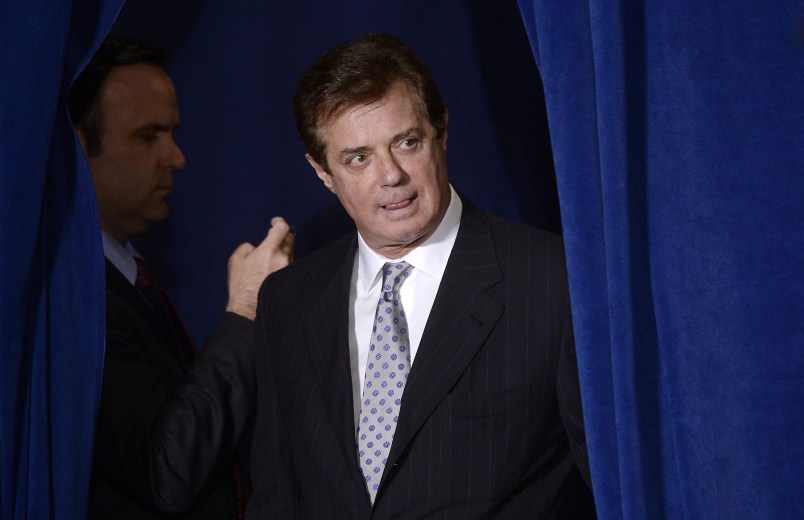Here’s another perspective on last night’s Manafort news. I explained last night that at least two members of Trump’s team were being surveilled last year under FISA warrants over ties to suspected Russian intelligence operatives. But there’s another dimension of this.
Carter Page had been under FISA surveillance since well before the campaign started, in fact going back a couple years. Russian intelligence operatives had tried, though apparently not succeeded in recruiting him. We now know that Manafort too had been under FISA surveillance for a couple years before the campaign over his work for Viktor Yanukovych, the Russia-aligned leader who was deposed in 2014.
That probe was not tied to the 2016 election. It predated it. But when we’re trying to make sense of how the initial counter-intelligence probe intro Trump and Russia began, it’s important to note that at a certain point, as Trump’s campaign began to coalesce in the Spring of 2016, people in the intelligence community must have noticed that two key people in the campaign were the targets of on-going counter-intelligence investigations. That’s not normal. What’s more, the candidate, innocently or not, was repeatedly praising the foreign power who were the focus of both probes: Russia.
Consider a couple dates.
On March 21st, 2016 at an editorial board meeting with the Washington Post, Trump announced his first five foreign policy advisors: the one tasked with formulating policy on Europe and Russia was Carter Page.
One week later, on March 28th, Manafort was brought into the campaign with a brief to secure the delegates who would clinch the nomination. Over the next several weeks, Manafort became the dominant figure running the campaign, effectively the campaign manager. On June 21st, the practical reality was confirmed when Corey Lewandowski was fired as campaign manager and replaced by Manafort.
This is also the period when Michael Flynn’s role was being solidified in the campaign. As I noted last night, as far as we know, Flynn was not then the target of any investigation. That began in the days immediately after the election. But he had already raised eyebrows with a seemingly close relationship with people around Vladimir Putin and a Russia-friendly outlook tied to what he saw as a potential alliance in combatting Jihadi groups in Syria and Iraq.
This does not necessarily shed light on what if anything these men did wrong. The fact of investigations are not proof of wrongdoing. But it does give us more sense of how the probe began. In addition to whatever chatter the FBI and other intelligence agencies were picking up through standard surveillance, they were watching a seemingly very Russia friendly candidate stocking his campaign with people who were or recently had been under surveillance for possibly working as agents of the Russia government.
That must have made all sort of alarm bells go off. Indeed, we’ve heard as much. We just didn’t know until last night just what had started them clanging.






